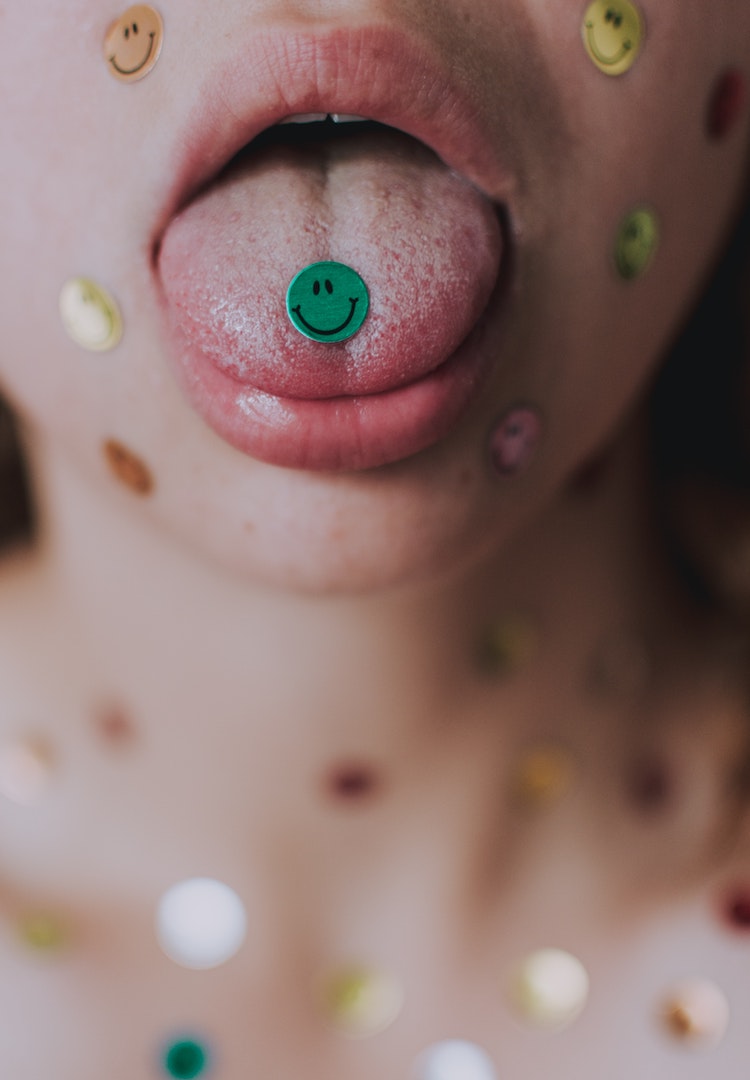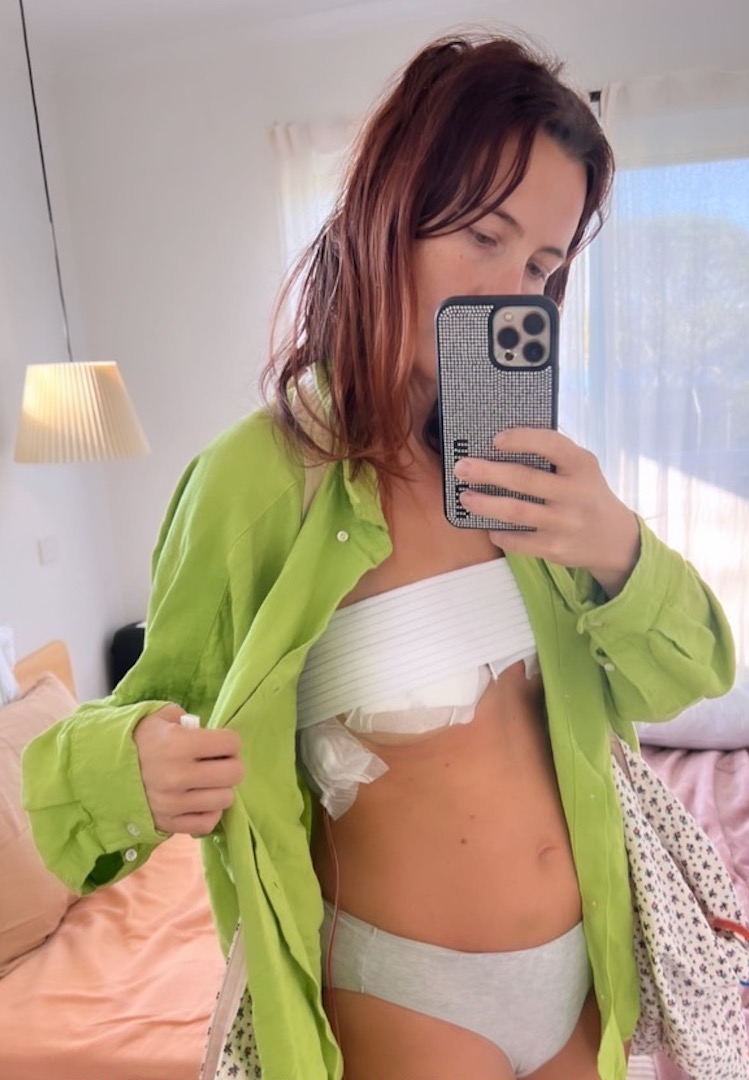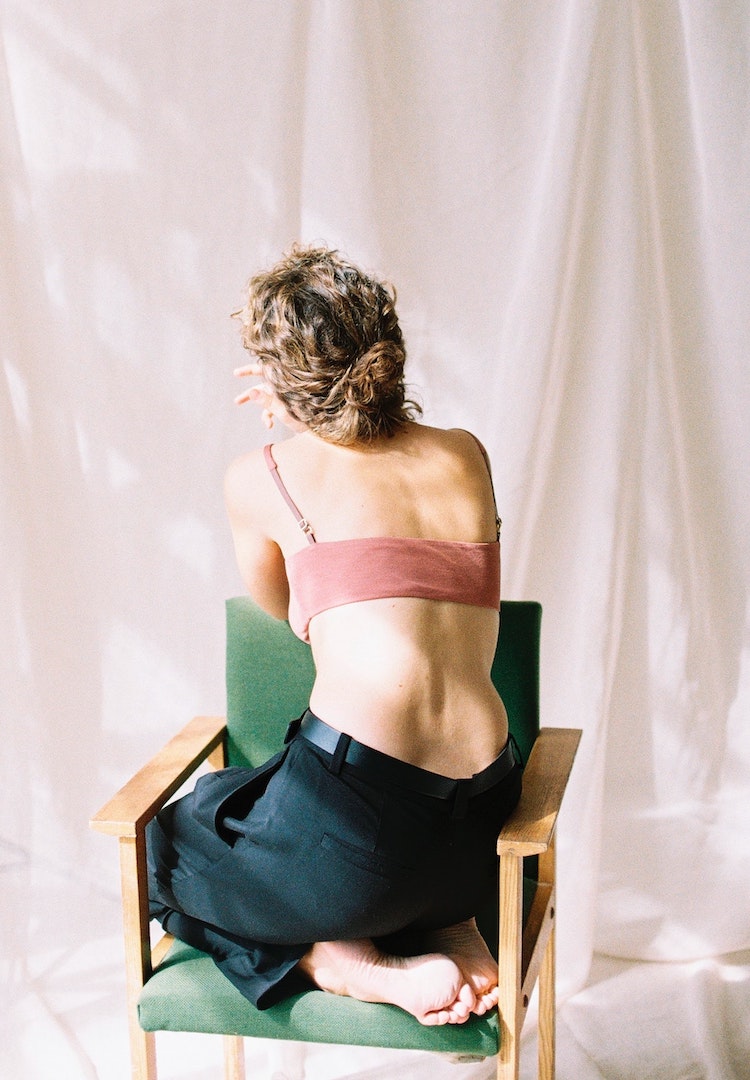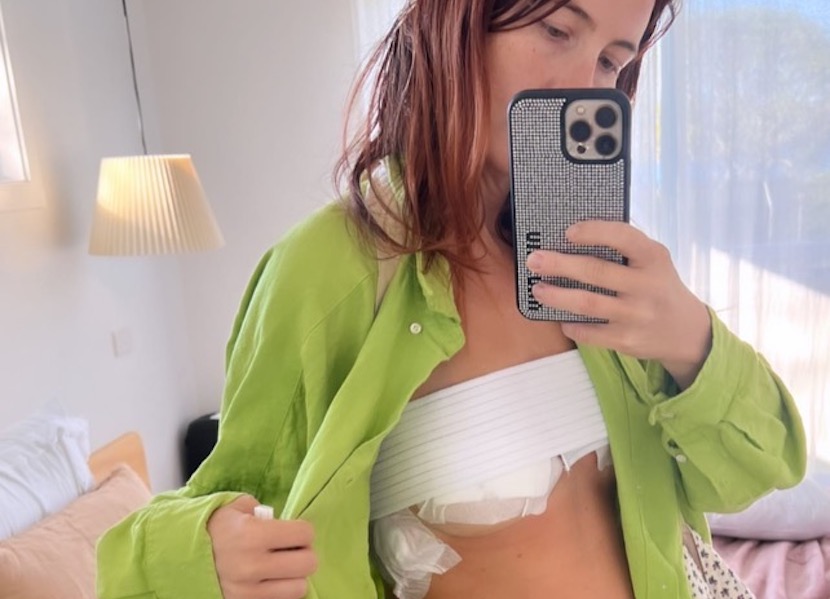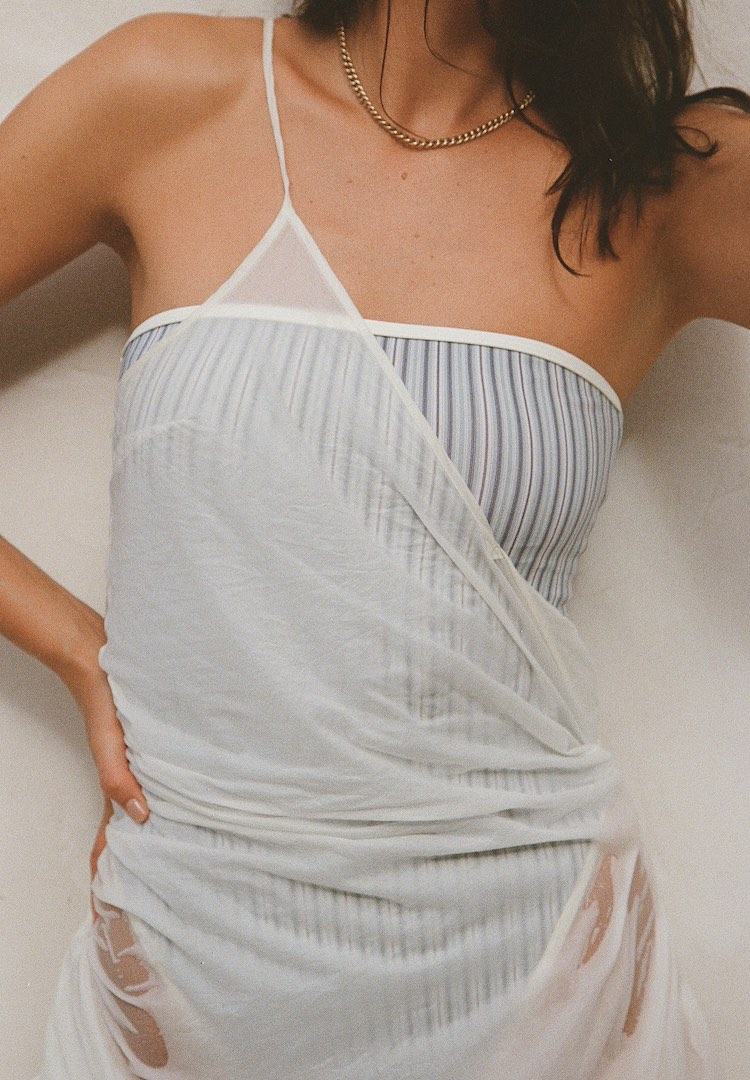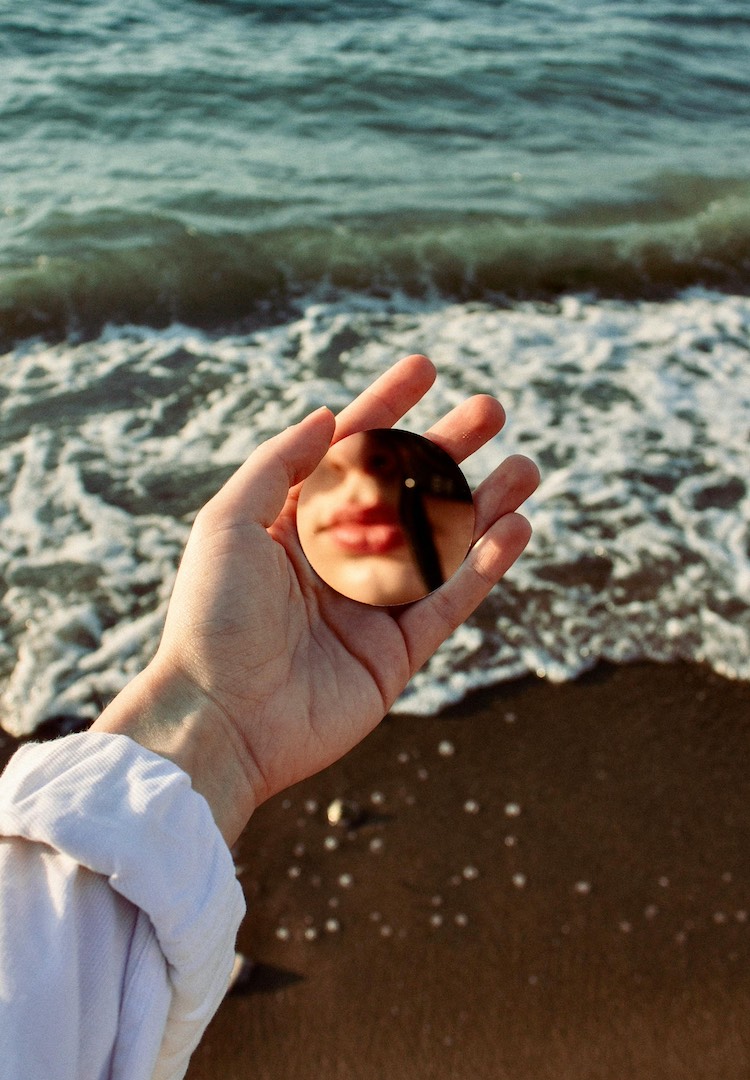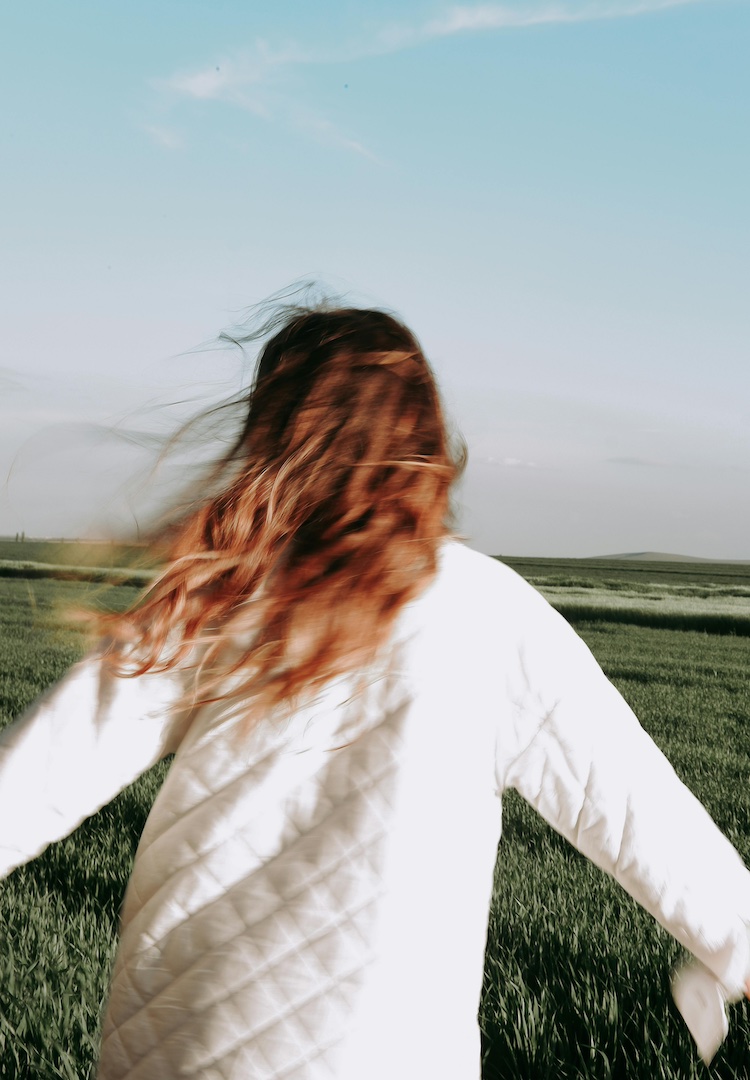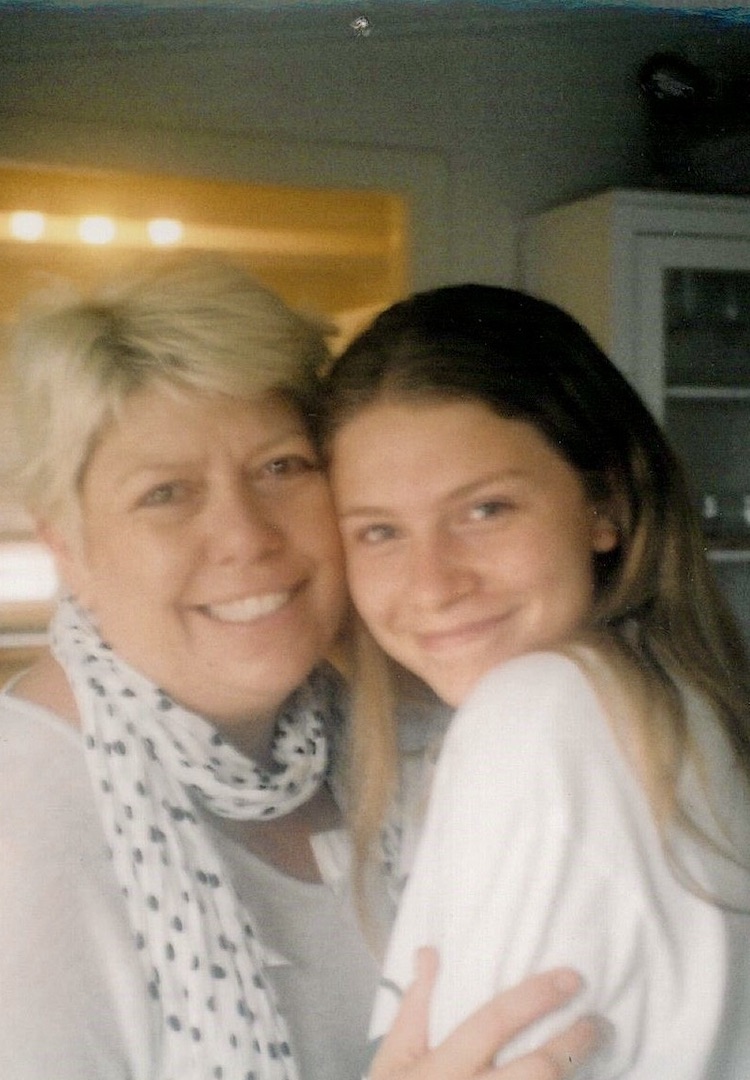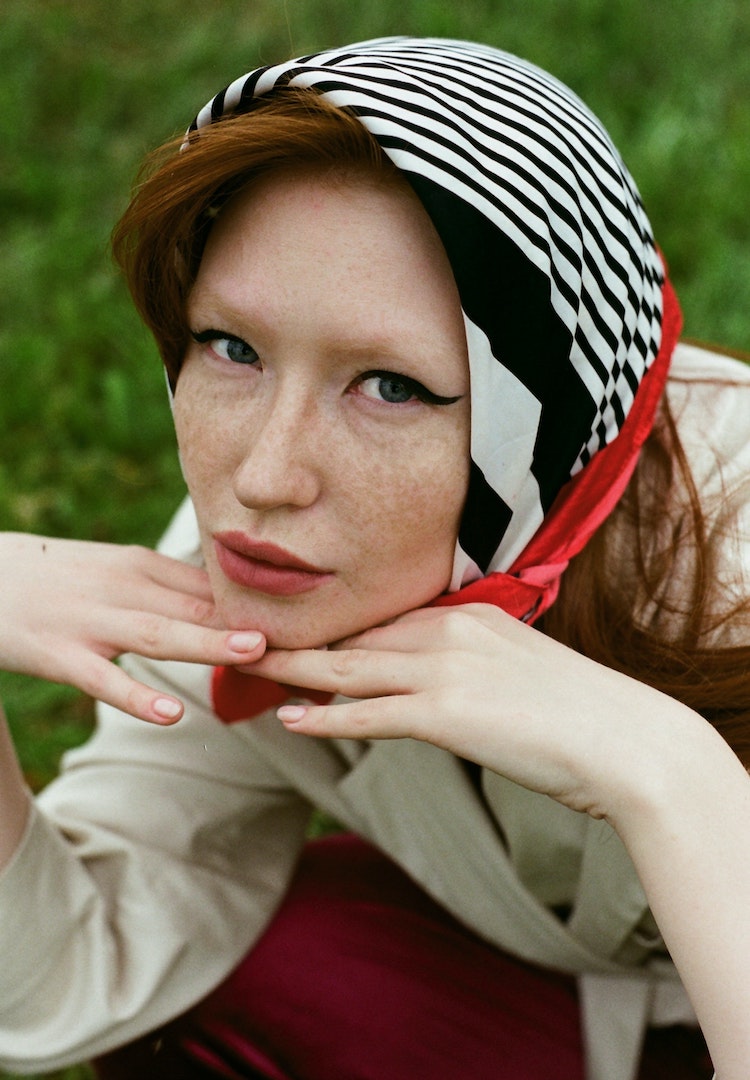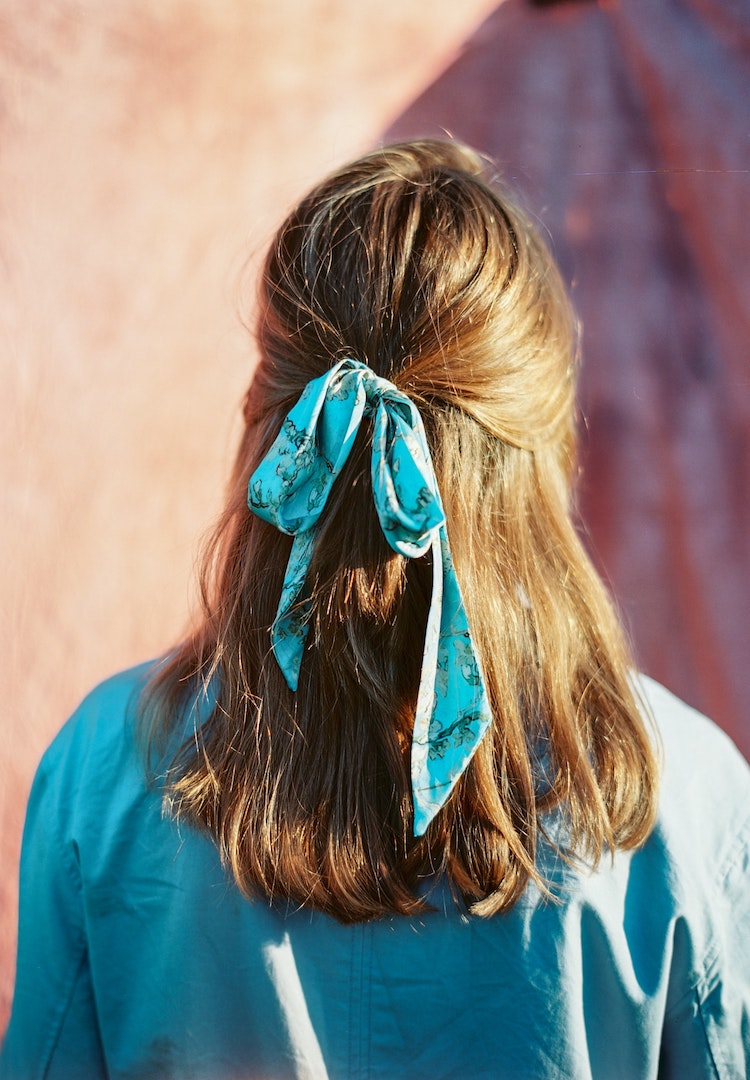“It doesn’t have to feel like a death sentence”: Why I got a preventative double mastectomy at 32
WORDS BY ASHLEIGH VALLIS
“I was terrified about how I’d look.”
When I was 22, my dad found a small lump. Not where you would think a man would – it was under his nipple. He was lucky enough to discover it at a very early stage and was able to treat and eradicate his breast cancer with chemo, radiation and a mastectomy. He was tested for the BRCA gene mutations and came back positive for BRCA2.
My brother and I were then given the opportunity to be tested as well. I chose to do it and he didn’t. Unfortunately for me, I turned out to have the BRCA2 gene mutation. At the time, I was told there wasn’t much to do or worry about until I turned 30.
So I decided to push it to the back of my mind and hope that in the next eight years, someone might develop a miraculous cure for cancer. (I’d like to add that there are many women who do develop breast cancer in their twenties and I shouldn’t have been so flippant and carefree. I should’ve made a point of checking myself, even at such an early age.)
Fast forward the next eight years, and I became a mother to two beautiful daughters. I turned 30 and alas, there was no cure for cancer. I decided my only logical option was to be ‘extreme’ and have the preventative double mastectomy. (I know this choice is not for everyone, and I’m only telling my point of view.)
I felt like I was lucky enough to have the opportunity to have this surgery. It meant radically reducing my chance of having to put my family (and myself) through cancer I was 80 per cent likely to develop. I found a highly reputable surgeon in the Northern Rivers of NSW, Dr Robert Simon, and put my name down on the waiting list. While it was daunting, I had ten years to prepare myself for the reality of the situation so I was at peace with my decision.
I ended up waiting approximately 18 months for the surgery. I didn’t think about it too much until I got the call with the surgery date. I hung up the phone and bawled my eyes out. I was terrified about how I’d look. I found a support network called Pink Hope here in Australia and joined a Facebook group for women in the same or similar positions.
While it’s extremely important to find out all information from your doctor, it’s equally important to be able to talk to other people that have experienced the same thing. Connecting with people who were a similar age to me put me a bit more at ease.
I decided to have non-nipple-sparing surgery, which basically means they took my nipples as well as my breast tissue. I personally didn’t have much of an issue with it, but I know some women do and choose to keep them.
I found an amazing woman named Niki from Pro Cosmediq who is, among other things, the first and only person in Australia to create external silicone nipples and areola prosthetics. You really need to see them to understand how life-like and amazing they are. It’s really a game changer for women like myself, or women who didn’t have the choice and have been through cancer.
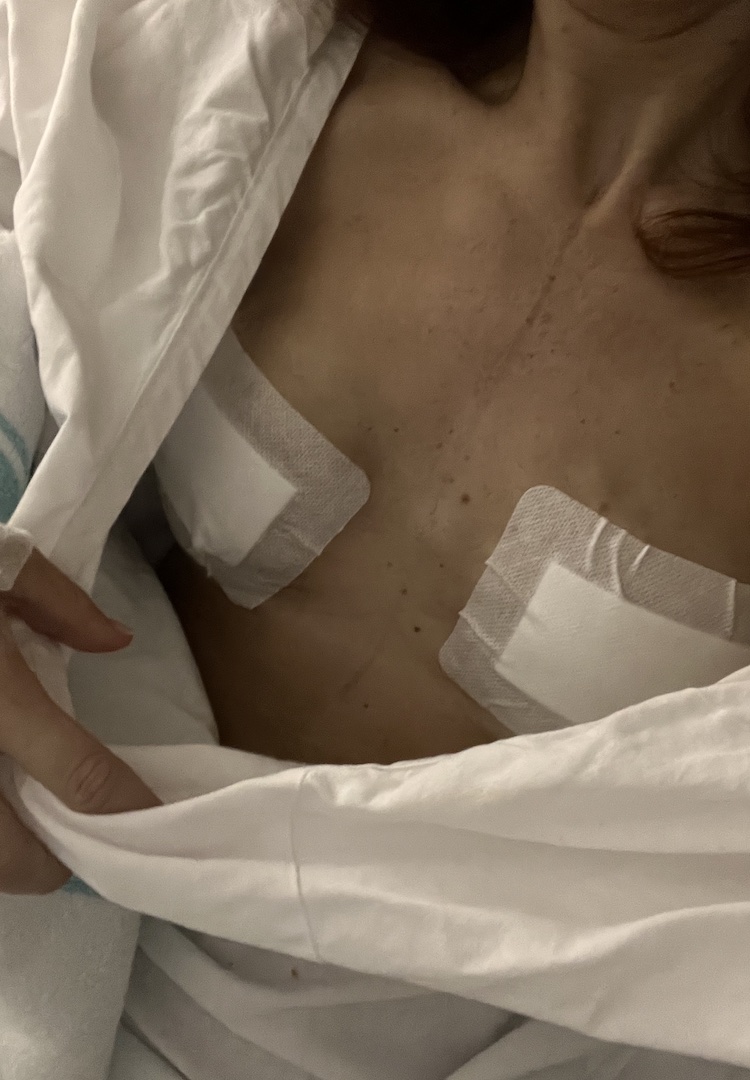
So, before my surgery, I went to visit Nikki and choose my ‘designer nipples’. Instead of moulding my own, I chose to upgrade to some perky new ones. This gave me a little bit of light to hold onto for post-surgery.
My surgery day finally rolled around and I was very nervous. I cried when they were wheeling me to the theatre (partly because I watch too much Grey’s Anatomy and thought I was going to die for no reason). The nurses and surgeons were so kind and made me feel at ease – and then boom, I was out. Going into the surgery, I was hoping to have a reconstruction done with implants put in at the same time.
The surgeon couldn’t guarantee it would be viable and explained I might need to have expanders put in place instead. If you don’t know what these are, in layman’s terms they’re like little balloons that get placed in and every few weeks, you get them filled up so your skin has time to expand slowly. That option would have meant another surgery for implants later on, and I was desperate to avoid that.
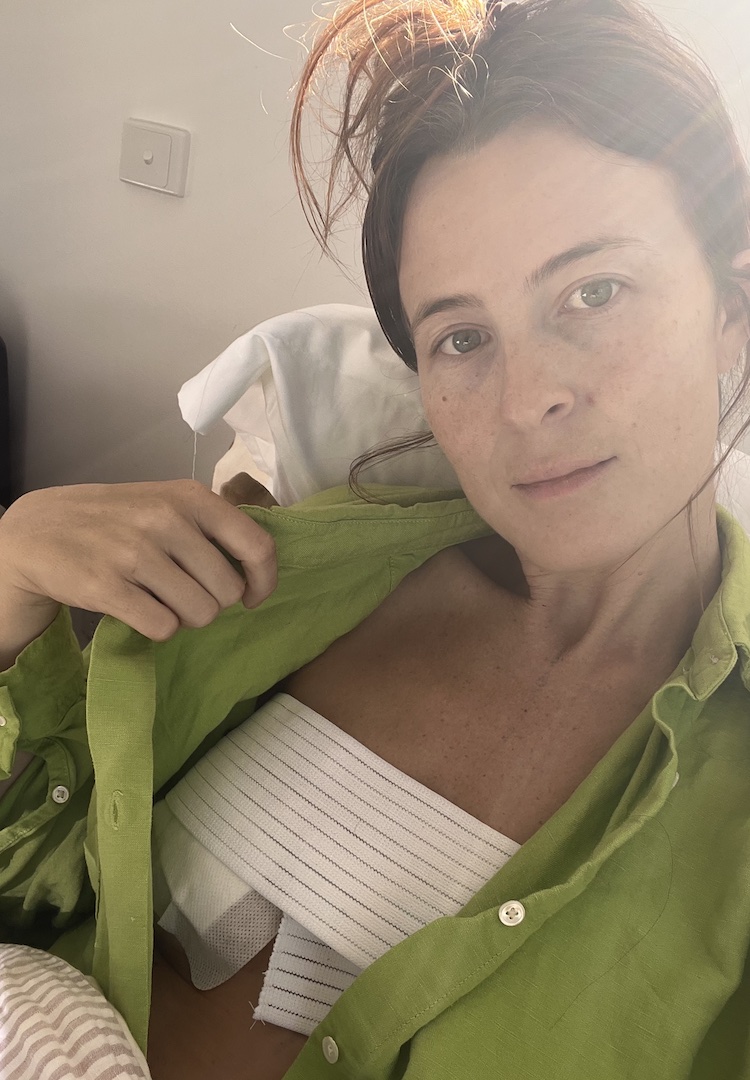
I woke up from the anaesthesia and the first thing I asked was if I had expanders or implants. The nurse next to me told me it was expanders and while I was gutted, I knew it would be fine. Then the surgeon came to visit and told me what a “success” the surgery was and how great it was that I “got the implants in safely”. I was so confused!
The surgeon told the nurse he was wrong and in my delirium, I grabbed his arm and told him he was “in big trouble” and then laughed my head off. The first night was easier than I thought, although I had two drains coming out each side of me under each breast which was annoying. The next day was painful but it wasn’t unbearable.
I had to get used to walking around with the drains, which were more painful than the boobs. I spent three nights in the hospital and then went home, with my drains now in cute little handmade bags. I rather enjoyed being waited on hand and foot by my family as I watched 600 hours of Netflix.

The drains remained in my chest for a total of ten days. When the doctor finally said I could get them taken out, I was so excited. I guess nothing can prepare you for the feeling of drains being ripped out of you until you experience it yourself. I’ll just say, it’s as horrible as it sounds. I think the extremely brief five seconds it took to pull them out was the worst part of the whole situation.
After this, I felt gradually better every day. Now five weeks out, I feel almost normal again. I guess the whole point of my wanting to share this is just in hopes it might reach a few people who find themselves with a BRCA gene mutation. Hopefully, this puts them at ease. It doesn’t have to feel like a death sentence and you can do something about it.
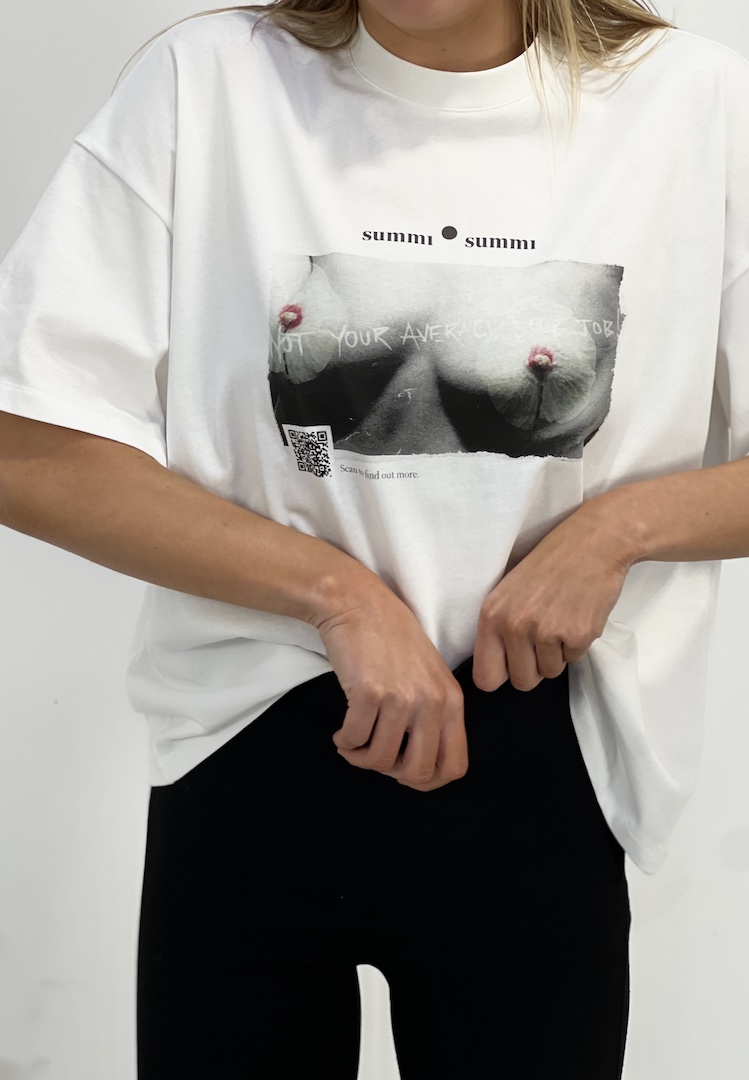
My label, Summi Summi, is soon going to launch pre-orders for our ‘Not your average boob job’ T-shirts and sweaters. All profit from the sales will be donated to Pink Hope Australia, which is a patient-focused organisation committed to supporting people to understand and reduce their risk of hereditary cancer. They provide evidence-based information to help break the cycle of cancer in Australian families and encourage conversations that save lives.
You can show your support by picking up a charity T-shirt or sweater here.

